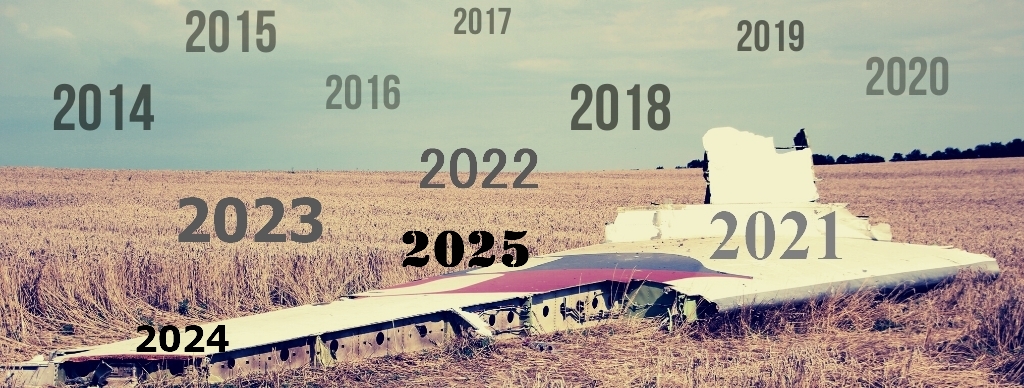90

N.B. For privacy reasons, names of individuals and some contact details have been blanked out in this
document
 |
|---|
MH17: как и кто? |
Привет, Гость! Войдите или зарегистрируйтесь.
Вы здесь » MH17: как и кто? » Отчеты и доклады DSB и JIT » Отчет DSB 13.10.15: MH17 About the investigation
90

N.B. For privacy reasons, names of individuals and some contact details have been blanked out in this
document
91
APPENDIX J
REQUEST WITH REGARD TO THE REMOVAL OF THE REMAINING PIECES
OF WRECKAGE

N.B. For privacy reasons, names of individuals, their signatures and some contact details have been blanked
out in this document.
92

N.B. For privacy reasons, names of individual, their signatures and some contact details have been blanked
out in this document.
93
APPENDIX K
ANALYSIS TECHNIQUES USED
STEP
Sequentially Timed Events Plotting (STEP 33) is a multi-linear technique in which events
are grouped in a matrix according to a fxed format. The horizontal axis gives the time
line, the vertical axis gives the actors involved in the event. This manner of structuring
offers the investigation team the opportunity to identify causal and temporal relationships
between events in the circumstances of an incident. These relationships can be subjected
to closer examination in further analysis steps.
Tripod Beta
Tripod Beta34 was developed in order to be able to explain and control the origin of
human error. This technique assumes four general principles:
1. Accidents occur when barriers fail or are lacking
2. Barriers fail due to human error
3. Human error is determined by the context in which the barrier should have been
maintained
4. The context in which human error occurs is determined by actions or lack thereof at
management level in the organisation
The Tripod technique offers a rigid terminological framework and a syntax that makes it
possible to identify barriers, human error, context factors and the underlying causes at
management level systematically.
STAMP
Systems-theoretic Accident Model and Processes (STAMP 35) is a non-linear analysis
technique that views the occurrence of hazards as a systems theory control problem. The
assumption of STAMP is that safety is an emergent characteristic of complex sociotechnical systems, in which both the individual components and their underlying
interactions need to satisfy certain conditions. STAMP offers a terminology and syntax
that allow for systematic examination of potentially inadequate control.
33 See also: Hendrick, K., & Benner Jr, L. (1987). Investigating Accidents with STEP. Marcel Decker. Inc. New York, U.S.
34 See also: Doran, J.A., & Van Der Graaf, G.C. (1996, January). Tripod-BETA: Incident investigation and analysis. In
SPE Health, Safety and Environment in Oil and Gas Exploration and Production Conference. Society of Petroleum
Engineers.
35 See also: Levenson, N.G. (2011). Engineering a safer world. Systems Thinking Applied to Safety, The MIT Press,
Cambridge, MA, U.S.
94-97
APPENDIX L
RESPONSE TO THE COMMENTS OF THE RUSSIAN FEDERATION
During the last joint meeting, the Russian Federation endorsed the notion that flight
MH17 was hit by pre-formed fragments coming from a warhead that detonated to the
left of the cockpit. The Russian Federation questioned the fndings on the basis of which
the Dutch Safety Board concluded that the crash of flight MH17 was caused by the
detonation of a 9N314M warhead. The Russian Federation’s comments with regard to
each fnding of the Dutch Safety Board are listed in the table below, together with a
response by the Dutch Safety Board
Finding | The Russian Federation’s comment | The Dutch Safety Board’s response |
been considerably more extensive. | particular with regard to the boundaries | |
2. The Russian Federation also applied | As indicated above, the stringing | |
3. The Russian Federation stated that | The data pertaining to the sensor | |
The bow-tie shaped | The Russian Federation provides three | The Dutch Safety Board’s conclusion |
1. The Russian Federation stated that, | The detonation of the warhead took | |
2. The Russian Federation stated that, | The Dutch Safety Board was not invited | |
3. The Russian Federation stated that | The damage pattern observed does not | |
Injuries of the three | None | At a late stage the Dutch Safety Board |
The in-flight | None | By not commenting, the Russian |
98
Finding | The Russian Federation’s comment | The Dutch Safety Board’s response |
Discovered traces of | None | At a late stage the Dutch Safety Board |
The calculated | The Russian Federation stated that the | The Russian Federation based its |
99
Visiting Address
Anna van Saksenlaan 50
2593 HT The Hague
T +31(0)70 333 70 00
F +31(0)70 333 70 77
Postal Address
PO Box 95404
2509 CK The Hague
wwwsafetyboard.nl
Вы здесь » MH17: как и кто? » Отчеты и доклады DSB и JIT » Отчет DSB 13.10.15: MH17 About the investigation